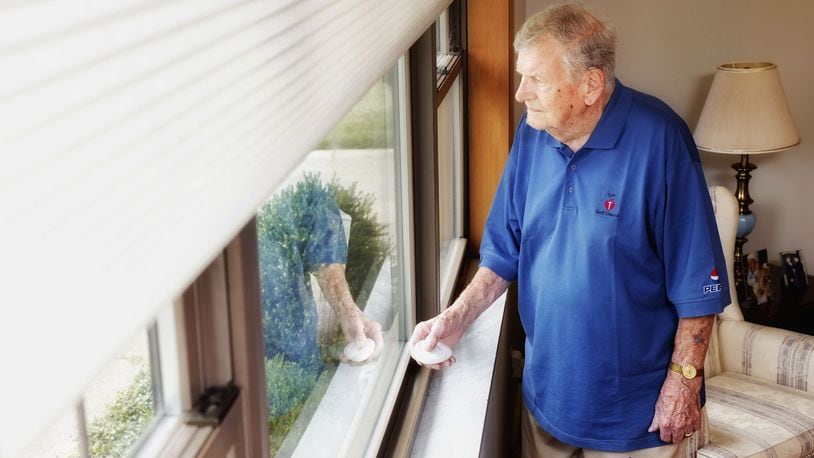Transitioning to modern technology can be tough for his 92-year-old father, Hal, but they are taking small steps. His home’s picture window now has battery-operated blinds that he can raise and lower with the touch of a button. They also have installed wifi in the house, and they are considering a camera in the living room.
When a health or safety issue arises, it can be hard to make the necessary changes to a home fast enough, Pearce said. He recommends getting started early, before they are needed.
“The hardest part is how to approach that conversation when people are healthy,” he said.
Pearce’s family turned to Independent Solutions, a Middletown-based company that provides services to help seniors in southwest Ohio age in place.
Tim Rudd, who founded Independent Solutions, said there are a variety of ways that older adults can use technology to make their homes safer and more comfortable. What to choose depends on the user’s lifestyle, abilities and health, he said.
“No one is the same,” said Rudd, who is a certified aging-in-place specialist and certified senior adviser.
Medical alert systems have options to notify either the user’s personal network or a monitoring system. Fall detectors also are available, with some that can be mounted on the wall or ceiling of specific rooms.
To many customers he recommends motion sensor lights, which can come in handy during middle-of-the-night trips to the bathroom when it can be difficult to find the switch. Smart plugs, bulbs and switches also can help with lighting.
Smart medication dispensers allow users to insert several weeks’ worth of medications and then prompt users when to take them. Others also can track on their phone to see if a loved one missed a dose.
Video doorbell systems became more popular during the COVID-19 pandemic, and they are still convenient to find out who is visiting, Rudd said.
Outdoor security cameras can alert homeowners when someone is near, and indoor cameras can give peace of mind to children who want to monitor their older parents, he said. The latter particularly requires a serious conversation, however, since some consider it an invasion of privacy.
Other options include smart thermostats, voice-activated devices, GPS locators and smart locks that don’t require keys to enter or lock a home. Technology continues to evolve in new ways to keep older adults safe, such as with sensors that turn off a stove when it doesn’t detect motion.
Rudd said to expect increasingly rapid advances in the future. Younger seniors are more open to using technology in their homes, and they aim to age in place.
“The mindset is starting to change because people truly want to stay in their home,” Rudd said.
Technology changes have been occurring gradually for a long time, even back to the introduction of the remote control for a television set, said Douglas McGarry, executive director of the Area Agency on Aging that serves west central Ohio.
Needs can change based on whether someone is living alone or with a spouse, and tech users also must decide for themselves how to reconcile their safety with their privacy. Wherever they fall on the scale, there are plenty of choices.
“Start thinking about options and things you might do before you need them,” he said.
Good first steps include installing wifi in the home and owning a smartphone, tablet or personal computer – and knowing how to use it, he said.
“Probably the biggest thing is getting familiar with the technology,” McGarry said.
Older adults don’t have to wade through the options alone. Services exist to evaluate what can be added to help them safely remain independent for as long as possible, he said.
Independent Solutions is one of those services. Rudd’s company offers in-depth assessments of the interior and exterior of a home to create a detailed report of recommendations. This may include technology updates but also looks at lighting systems, doorway widths, maintenance, tripping hazards and much more.
“The report that Independent Solutions issued was valuable, and it really guided us through how to make the home safe and adaptable for him,” said Pearce, 63. The report also included suggestions for his father’s house that he said he and his wife might consider for their own home in the future.
For those downsizing or building a new house, Rudd said now is the time to think about what is needed to make it a smart home.
“What do you really need to help you live a long, happy life in your own home using technology?” Rudd said. “Everyone is different.”
About the Author
